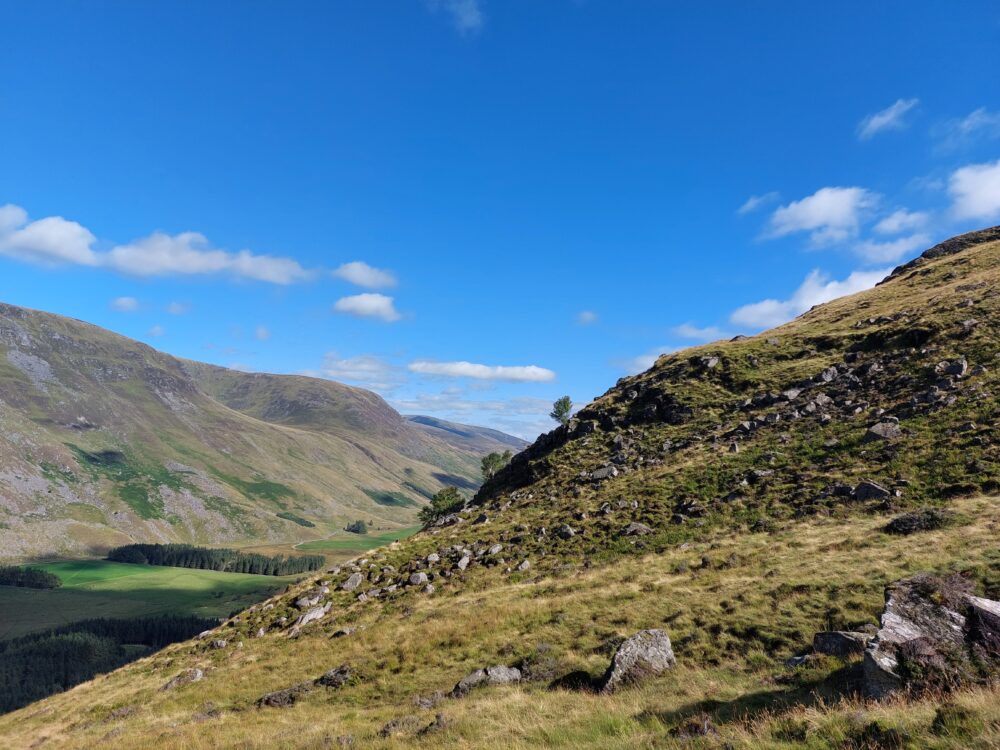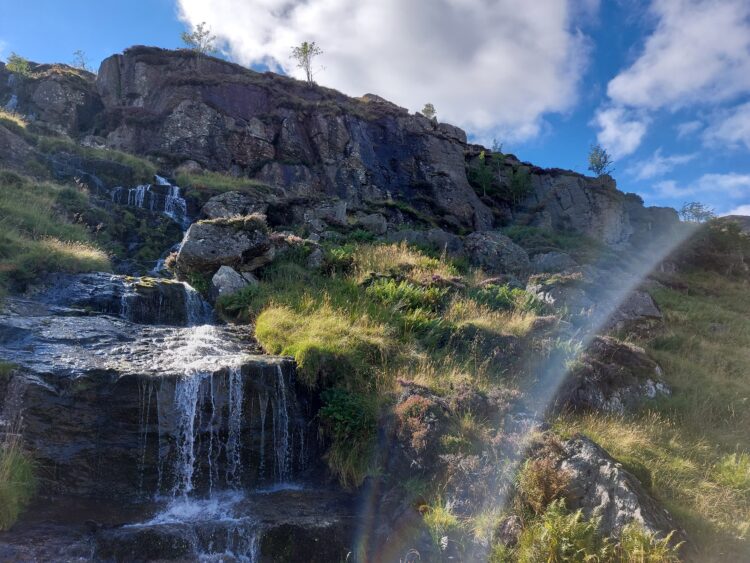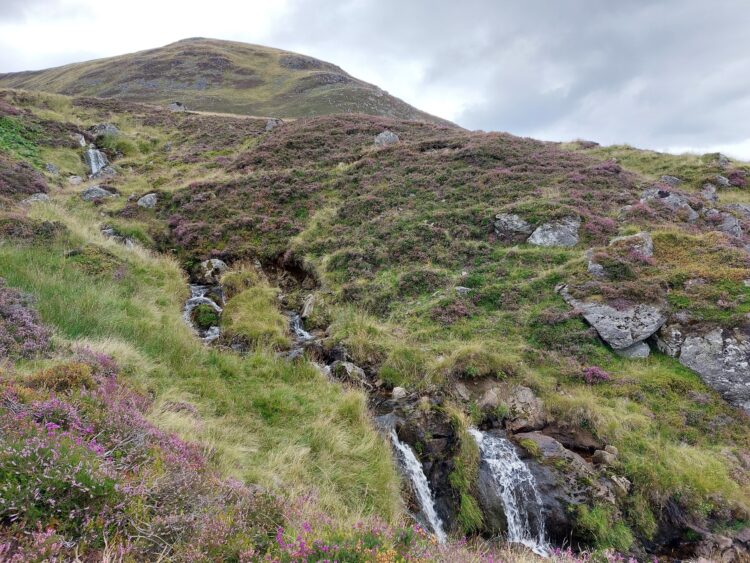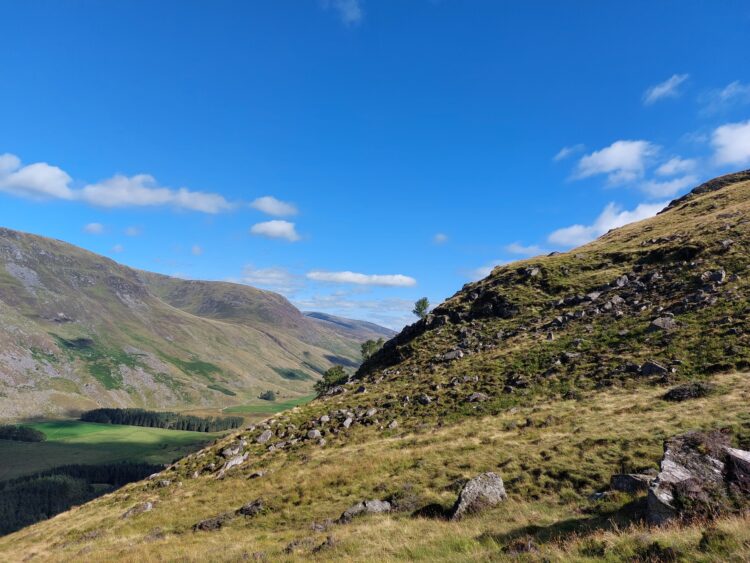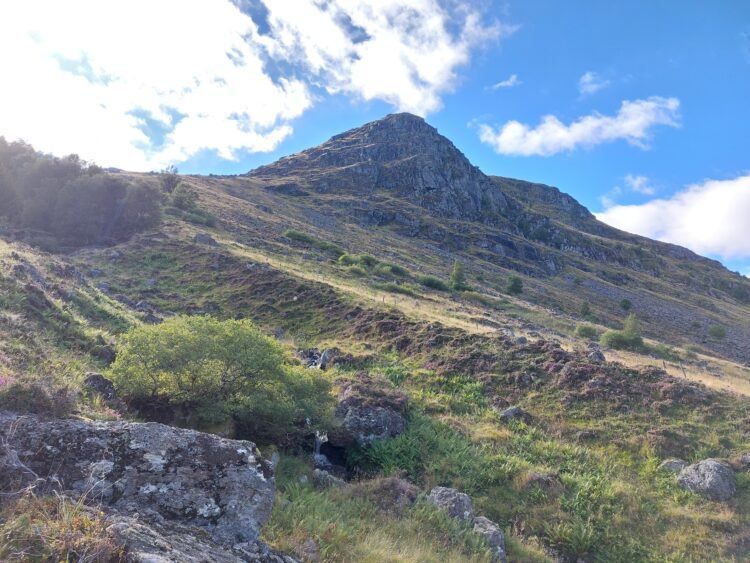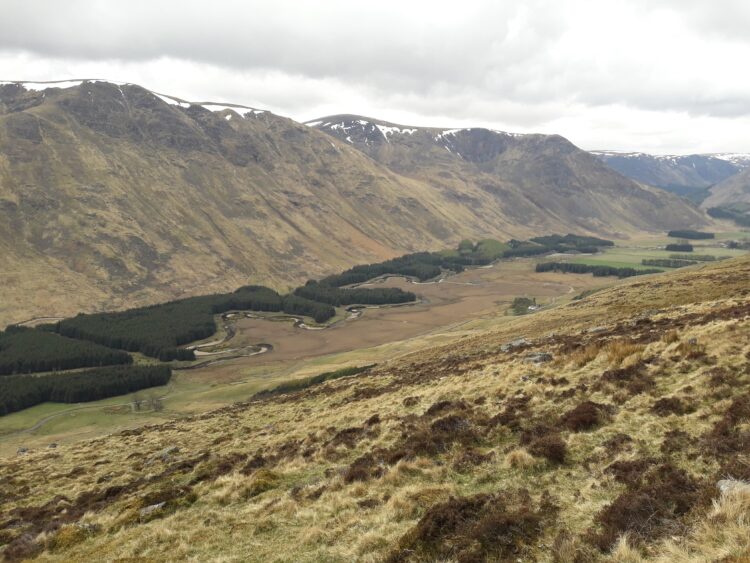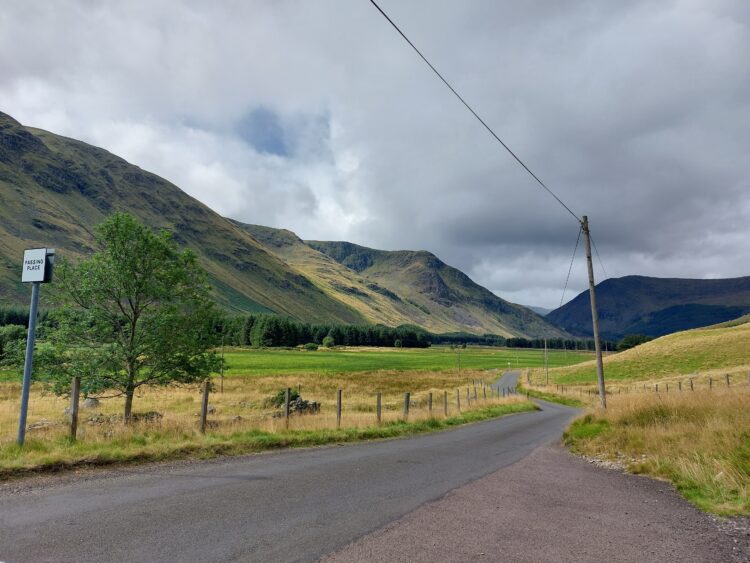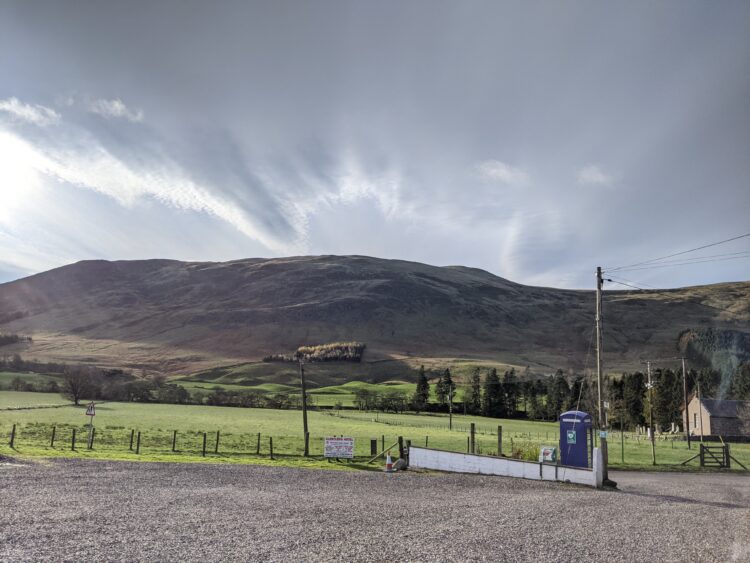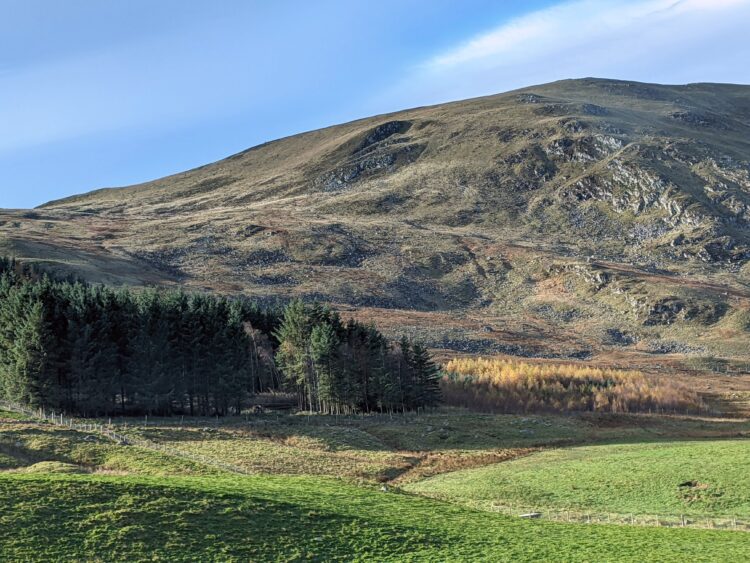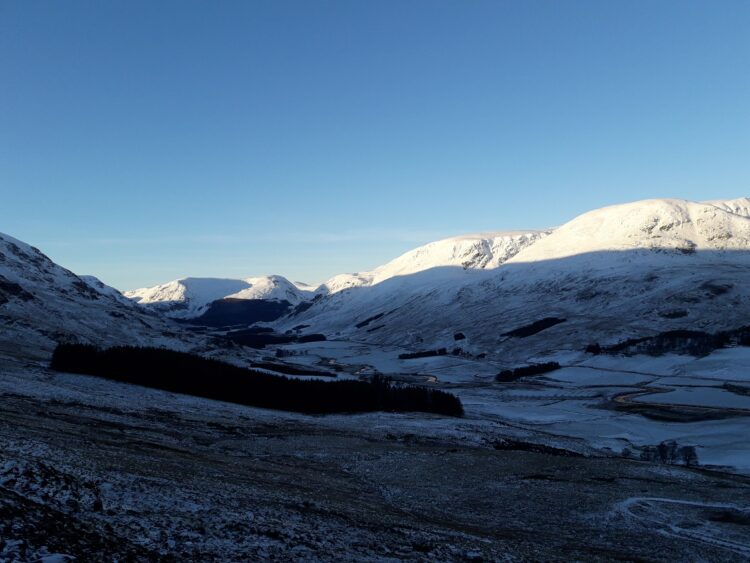This website uses cookies so that we can provide you with the best user experience possible. Cookie information is stored in your browser and performs functions such as recognising you when you return to our website and helping our team to understand which sections of the website you find most interesting and useful.
What is Glen Clova woodland creation?
The woodland creation project in Glen Clova will see the planting of approximately 640 hectares, located in the Angus Glens. The site is located within the Cairngorm National Park and consists of approximately 30% productive conifers and 70% native broadleaves and pine. The woodland is set against the stunning backdrop of the Cairngorm National Park.
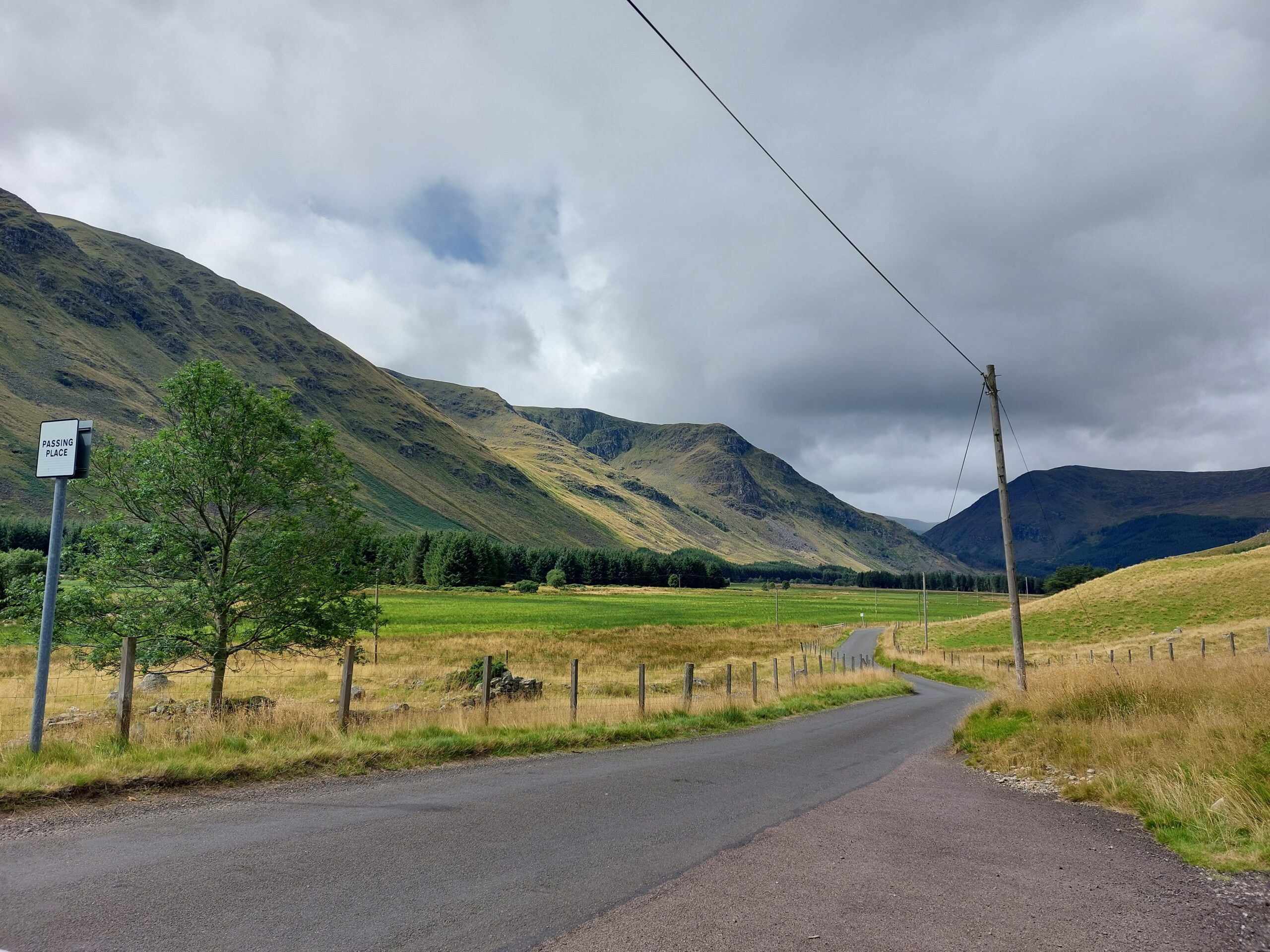
Also you can visit our web based 3D model of the planting proposals here.
Find out more about the Glen Clova Woodland Creation Plan
How many trees will be planted?
Approximately 1 million trees will be planted as part of this proposal.
What is the proposed planting design?
The proposed planting design has been sensitively produced and refined through a number of design iterations. Productive conifers will be located on the lower slopes, taking advantage of the better site quality and opportunities to integrate with existing productive conifer woodlands. Native broadleaves and pine woodland will be utilised on the mid and upper slopes and have been designed to integrate with the surrounding landscape.
The planting proposals integrate areas of open ground to protect peatland and wetland habitats as well as archaeological features.
Low-density and upland scrub woodland have been integrated into the upper margins of the site to provide ecotone between the woodland and open moorland and plateau habitats, as well as creating a visually attractive upper woodland edge.
What types of trees will be planted? And Why?
The proposed woodland creation in Glen Clova will see a mixture of woodland types planted. Approximately 30% of the proposed area will be established with productive conifers, including Scots pine, Sitka spruce, Norway spruce, and mixed firs including Douglas fir to offer a home-grown sustainable timber supply in the future for house building, landscaping and other industries.
How much Carbon will be sequestered throughout this project?
It is estimated that the proposed woodland creation will sequester approximately 150,000 tonnes of carbon over the lifespan of the project (the equivalent of the emissions from driving approximately 375 million miles in a petrol car).
What community access does the site offer?
The site is open access in accordance with the Scottish Outdoor Access Code. Glen Clova attracts around 100,000 visitors each year who visit the area to take part in hiking, mountain climbing, mountain biking as well as activities such as rock climbing and bouldering and Ice climbing during the winter months.
There are two core paths within the woodland creation proposal. The well-visited Loch Brandy footpath affords stunning views over Glen Clova and over to the Cairngorm plateau. The historic Ministers Path links Glen Clova and Glen Prosen and is well used by hill walkers and mountain bikers to create a circuit taking the Munro tops of Mayar and Driesh.
The proposal will enhance the visitor experience through the creation of visually diverse and interesting habitats as well as opportunities for extended public access on the proposed new access provision required during the woodland establishment and management phase.
The provision of access points along the proposed fencing routes will ensure access and will consider lesser used and minor routes too in the provision of appropriate gates and crossing points.
Why plant trees?
Trees are essential for people, wildlife and the environment. They are one of our best tools for sequestering carbon and therefore tackling the climate crisis we find ourselves in. Woodlands are particularly precious habitats for land-based wildlife, so planting trees can lead to substantial improvement for local biodiversity.
Woodlands are special places to visit, and they are known for their social health benefits.
Growing trees for timber production can also help tackle the climate crisis and contribute to the country’s transition to Net Zero carbon emissions. As the trees grow, they sequester carbon, and this carbon is subsequently stored within buildings themselves if timber is used in their construction.
Species/wildlife on site?
The woodland creation proposals have been developed through extensive on-site surveying and the development of several design iterations. Our site surveys identified Black grouse, golden eagle, peregrine falcon, wading birds, and Ring ouzel. The rare Scottish Wildcat has been recorded on the site and the new woodland will provide an extensive area of high-quality habitat for its breeding and hunting.
The woodland creation project will also positively contribute towards the conservation of the Atlantic salmon and Freshwater pearl mussel through the development of new woodland in the riparian zones of a number of minor tributaries to the River South Esk SAC. Planting on the steeply sloping glen sides will improve the management of surface rainfall run-off through the percolation and filtration by planting of new woodland.
Thank you for joining our public drop in session:
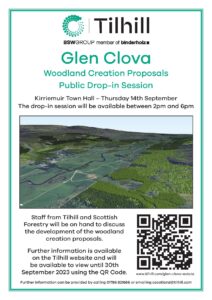
Previous Q&A's
A number of questions were raised by various interest groups, businesses and members of the local community in an earlier stage consultation. See below the question responses from our team:
| Question | Answer | Keywords/Topics |
| It is proposed that a significant area of deer habitat will be removed. What is the plan to ensure deer welfare is not impacted? | A deer management plan will be drawn up which includes a compensatory cull and a commitment to work with neighbours to maintain numbers at a healthy population over the longer term. The woodland design proposals have factored in access for deer to lower ground and shelter which is especially important during the harsher winter months | Deer management Plan
Biodiversity |
| How will the proposals protect archaeological features present on the site? | A detailed archaeology survey and report have taken place for the site, where archaeological features have been identified. Appropriate buffers will be applied to identified features. | Cultural Heritage
Surveys |
| The proposals have the potential to impact upon Golden Eagle range and the site is within an SPA for Golden eagles | Golden eagles are an iconic species of the Scottish uplands and can be seen soaring over the high plateaus close to the proposed planting site. The woodland design has been informed using the Golden Eagle Terrain (GET) model, which indicates the potential usage of the area by Golden eagles. Further vantage point surveying indicated very limited use of the proposed planting area. A 750m buffer has been applied from the known nest site and upper edge woodland design has been enhanced to encourage increased | Biodiversity
Birds Eagles Surveys |
| Will wader population be safeguarded? | Woodland creation designs have considered the results from the breeding bird surveys. This will ensure that key areas of significant wader populations are suitably protected from disturbance or habitat change.
|
Biodiversity
Waders Surveys |
| How will Black grouse be protected? | Our bird survey indicated a lek site within the planting area. Woodland design complements Black grouse habitat needs, including open ground, native pine woodland and low-density upper-margin woodland.
Lek sites are mapped, and operations will be planned to ensure disturbance does not occur during critical periods. Where fences are to be erected within 1.5km of a lek, fences will be marked to reduce the risk of bird strikes |
Biodiversity
Black grouse Fencing Birds Protection buffers |
| What measures will be put in place to ensure the planting proposals will not impact the designated qualities of the River South Esk SAC | The planting proposals will take place outside of the River South Esk SAC. The proposals will create new native woodland along the riparian zones of 15km of watercourses that are tributaries to the River South Esk SAC.
|
Biodiversity
Wildlife |
| How will soil carbon and peatland areas be protected? | A full phase 1 habitat and peat depth survey has been carried out which has identified key habitats to be protected. Appropriate buffers have been applied to protect peatland and flush habitats and these have been incorporated into the overall designed open ground | Soils
Peatland Surveys |
| How will public access be maintained and enhanced where possible, especially where it is necessary to erect deer fencing? | All new fencing will be designed to meet the Scottish Outdoor Access Code requirements. Known access points will be provided with pedestrian gates and work has taken place to identify lesser-used desire lines, additional access infrastructure will be provided at key locations and regular intervals to access through fencing can be found even in poor visibility.
New access provision will be required for the establishment phase of the woodland and will provide opportunities for enhanced access provision. |
Public Access
Population & Human Health
|
| The proposals are within the Angus Glens – Wildcat Priority Area what measures will be put in place to manage potential disturbance? | Wildcats are known to be present in Glen Clova. The expansion of woodland (with a high proportion of native woodland) will be beneficial to wildcats. During establishment operations, work will be undertaken under the supervision of an ecological clerk of works. Work will avoid sensitive areas during the breeding season. Additional infrastructure will be added to deer fences to ensure wildcats are able to access fenced areas that bisect their range. | Biodiversity |
| Glen Clova is in an area of Special Landscape Quality (SLQ) the Woodland Creation will need to consider the very sensitive nature of the landscape. How will the proposals consider and mitigate potential risks | A Landscape Value Impact Assessment (LVIA) and has worked through and contributed towards changes to the landscape design of the proposals. The LVIA has also taken into consideration the potential impacts of fencing and access construction. Fencing lines have been altered to ensure they fit the landscape as best as possible and the initial access provision has been significantly scaled back through additional site surveying work, with lower impact alternatives proposed | Landscape
Access |
| The area is popular with climbers and boulderers, how will access provision be maintained? | We have identified areas utilised by climbers and boulderers from our site survey work. Access through fencing will be included on current access routes by means of gates and styles where necessary. | Public Access |
| Will the woodland creation project consider using mainly European conifer species such as Norway spruce and Larch as secondary conifer species? | Due to the upland nature of the site and the risks surrounding the use of Larch on a widespread basis, we have had to consider productive conifers from a wider palette of species to ensure tree species are suitable and productive for the site. The primary productive conifer species will be Scots pine. Secondary conifers will consist of Norway spruce, Douglas fir, Western Red Cedar, Noble fir and European silver fir. This will ensure the woodland contains a diverse range of species suitable for predicted future climate changes | Timber production
Climate Landscape Biodiversity |
| Can the area of existing native woodland at Craig Duff and Craigs of Inchdowrie be captured within the proposed deer fencing? | The fencing proposals have been amended from an earlier design and now capture these areas of remnant woodland – it is envisaged that these will expand through natural regeneration over time. | Biodiversity |
| How will tree species for broadleaves and conifers be selected for the site to ensure the right tree for the right site. | We have undertaken a rigorous process of site survey, considering habitat and soil surveys to inform an Ecological Site Classification analysis across the site to ensure the best-suited productive and native species are utilised. | Timber production.
Survey Biodiversity Sustainability |
| There are several private water supplies sourced from the proposed planting area, how will these be protected? | On-site surveys have identified and mapped watercourses, springs and collection tanks used for private water supplies. These will be buffered and protected from forestry operations such as fencing, ground preparation and chemical weeding operations. | Population & Human Health
Community |
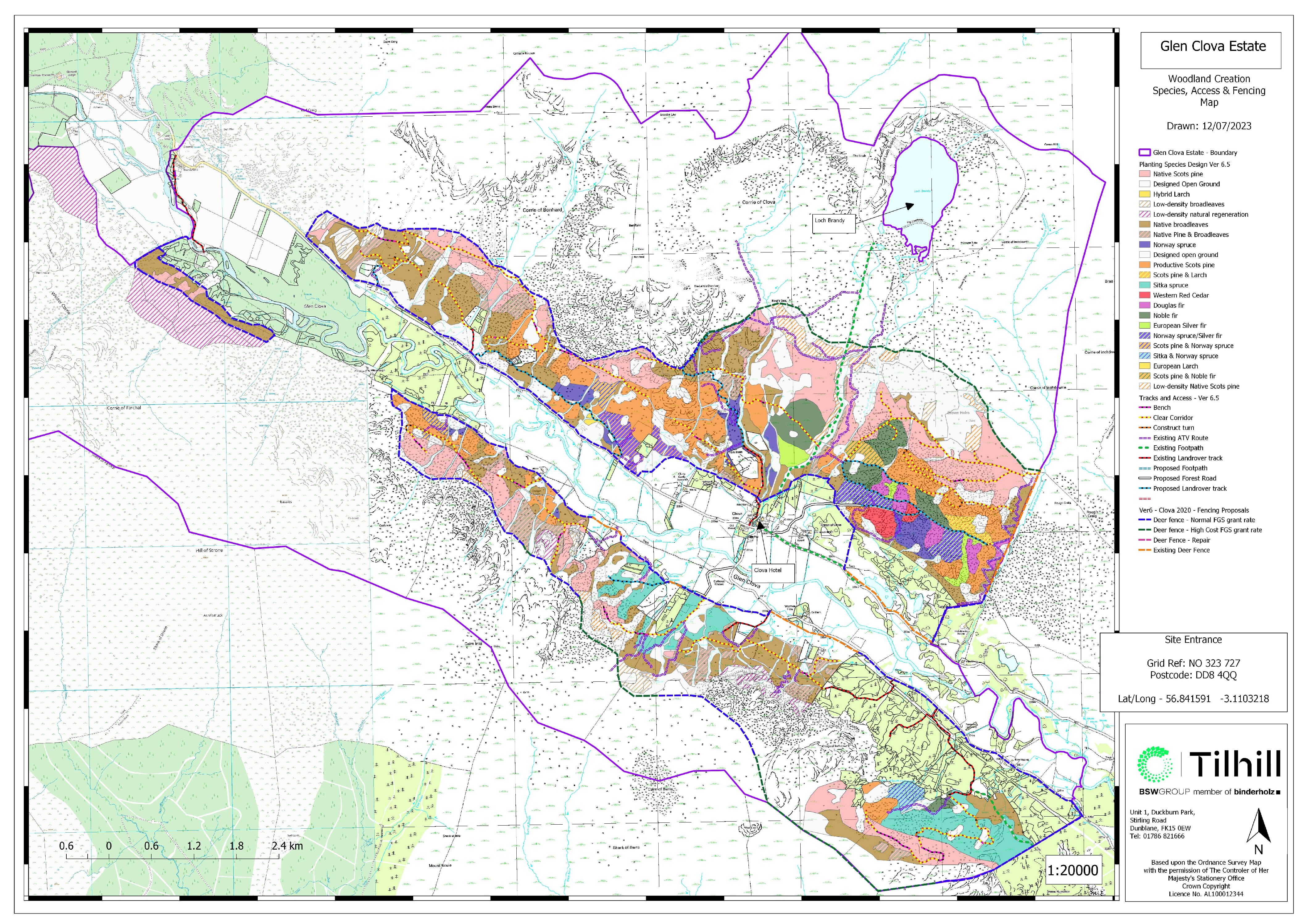
Species/Fencing/Access Map
View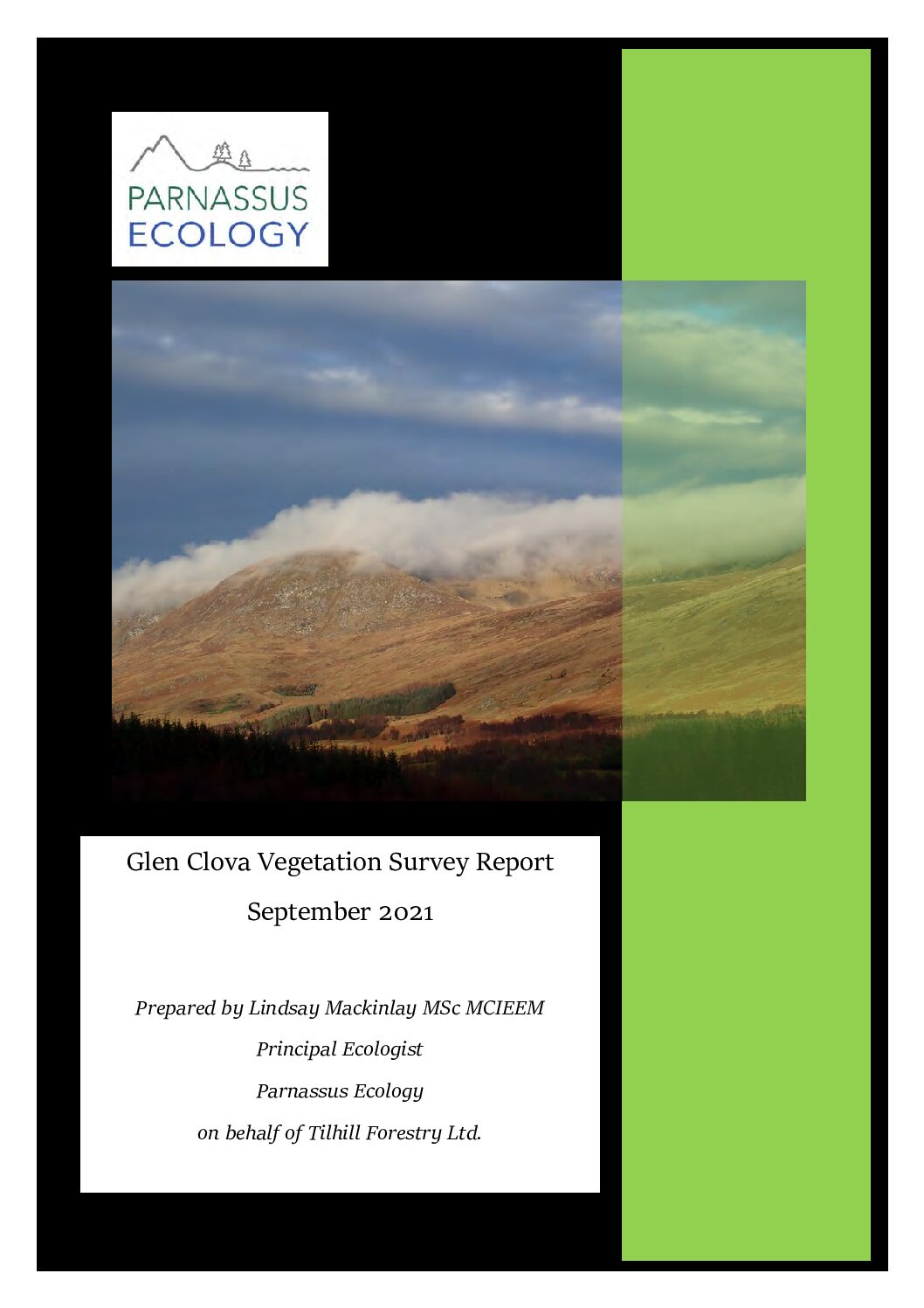
Habitat Report
View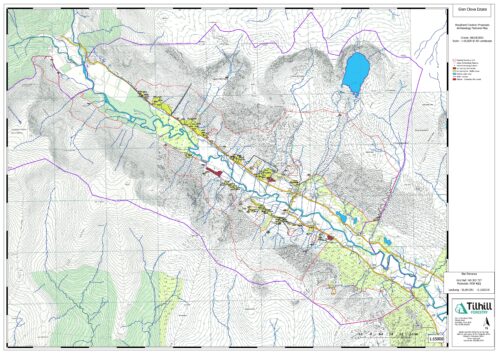
Habitat Map
View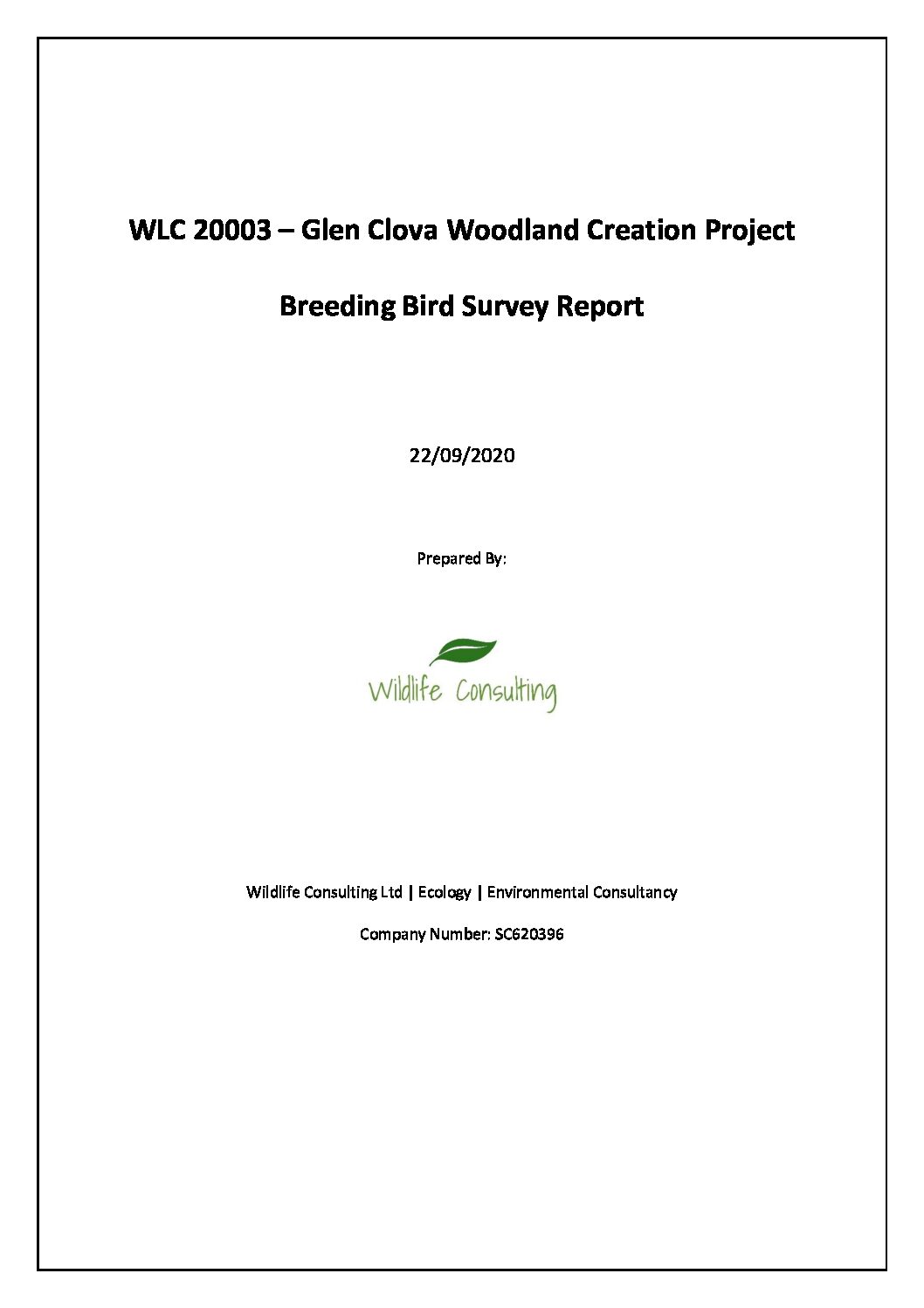
Breeding Bird Report
View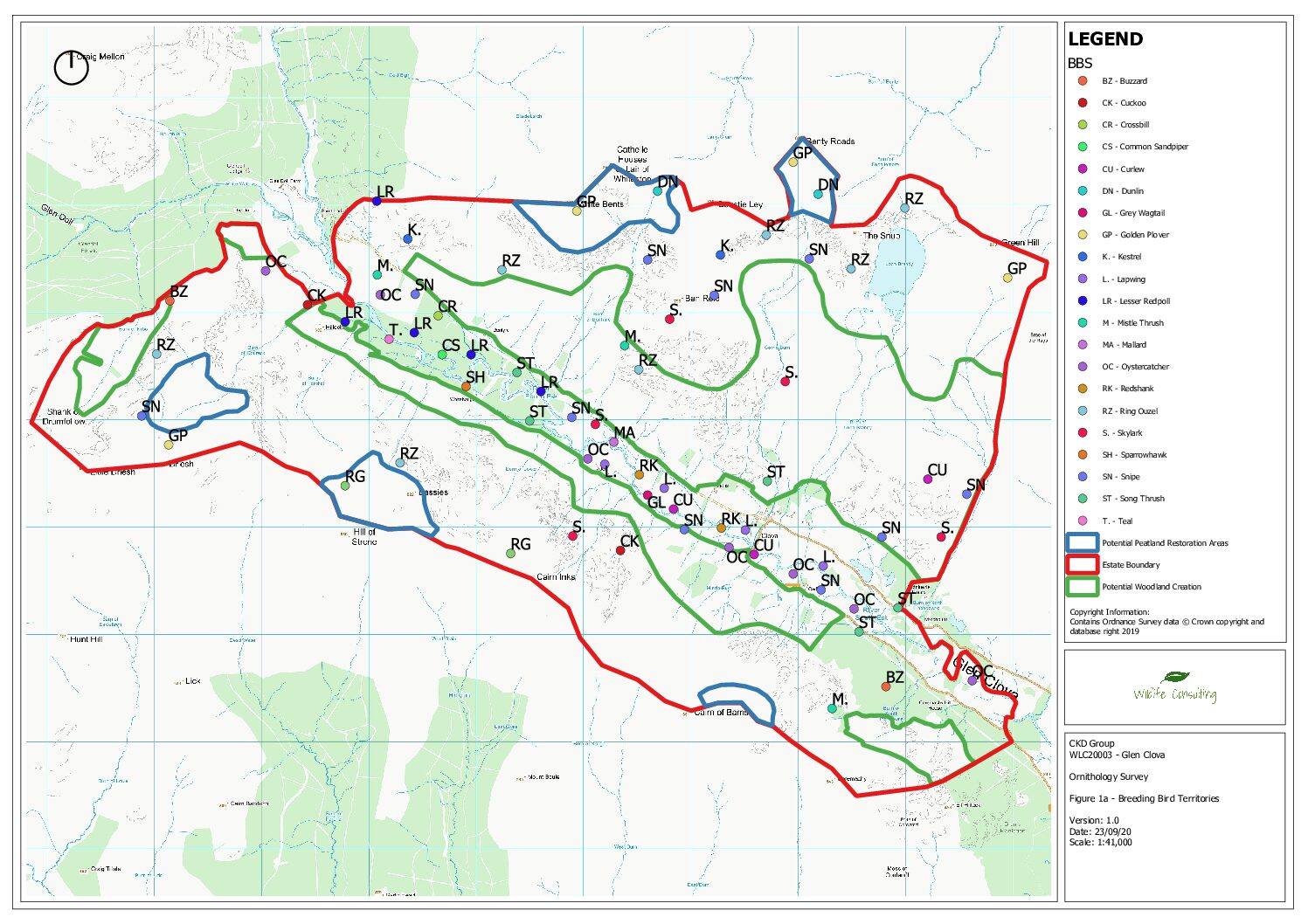
Breeding Bird Map
View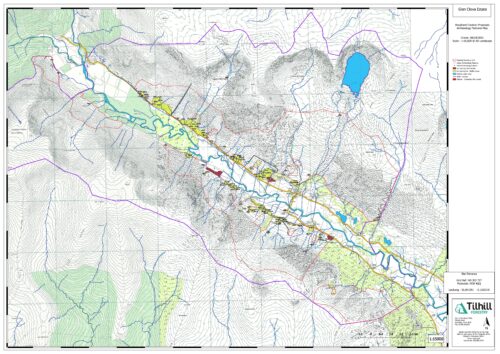
Archaeology Map
View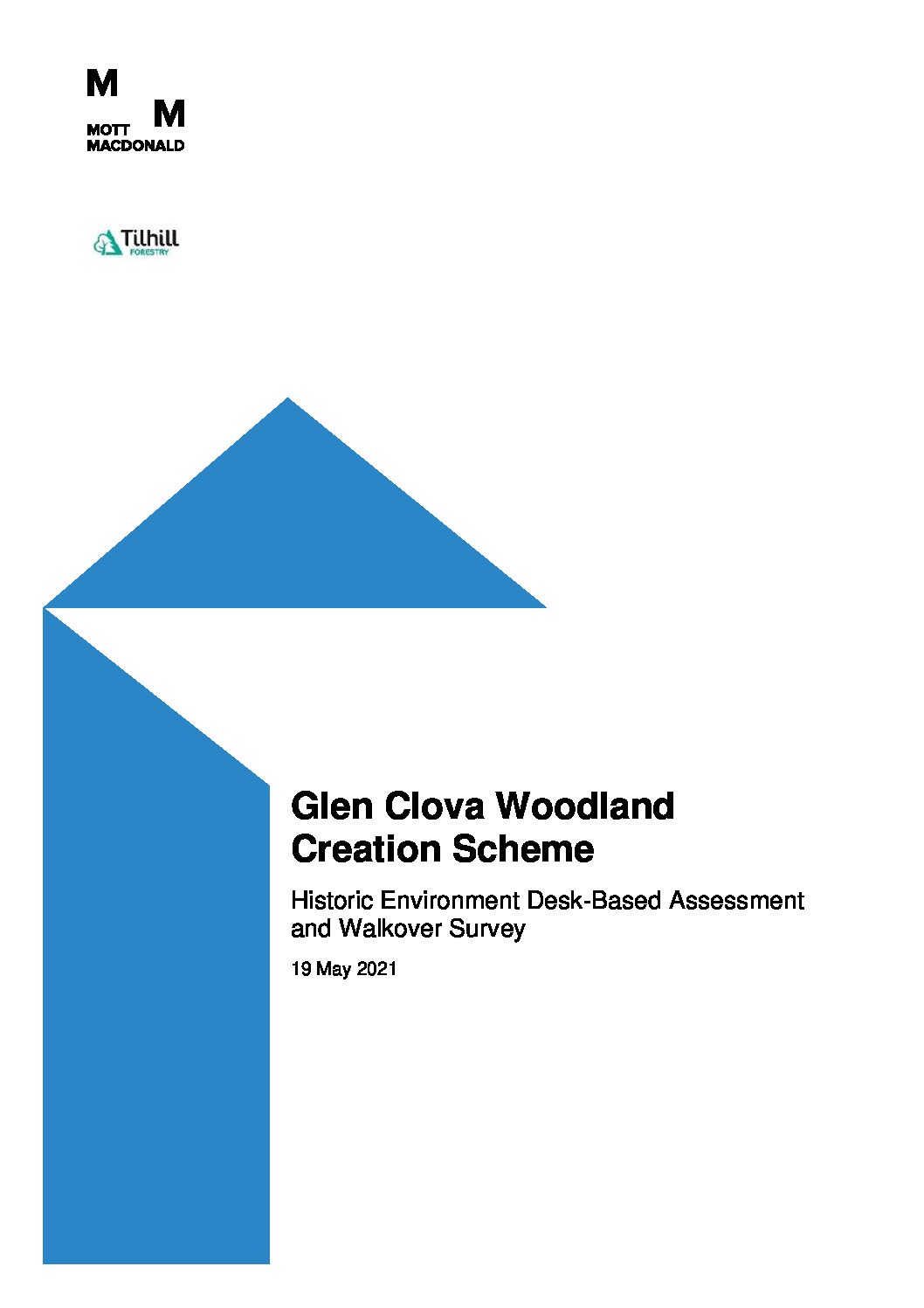
Archaelogy Report
ViewWe would like to invite you to take part in this woodland creation consultation through the form below.
Your response will be sent directly to your local Forest Managers for this project to address, we will only use the data you provide specifically to inform the consultation. For more information on how we use data please visit our privacy policy.



